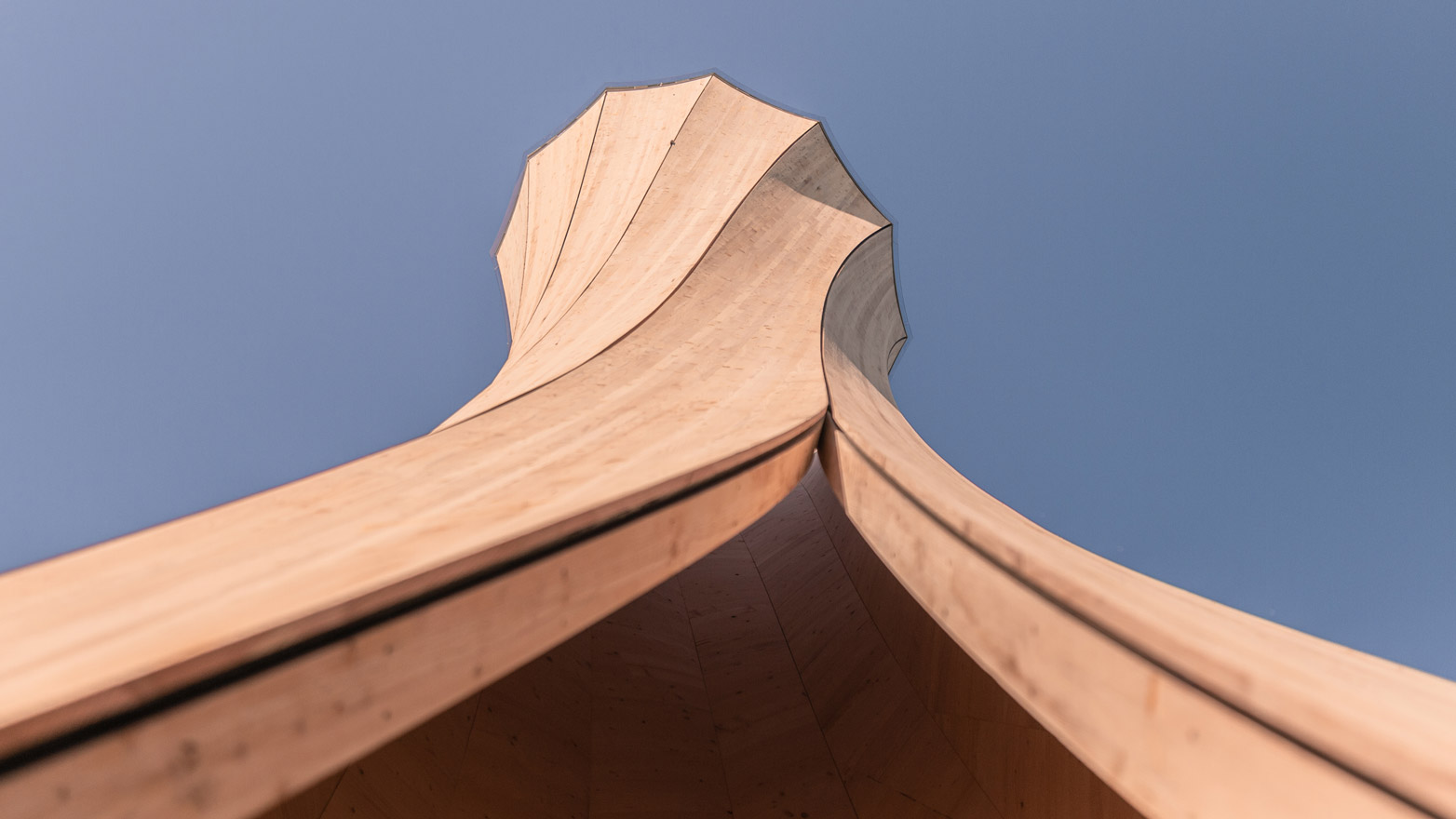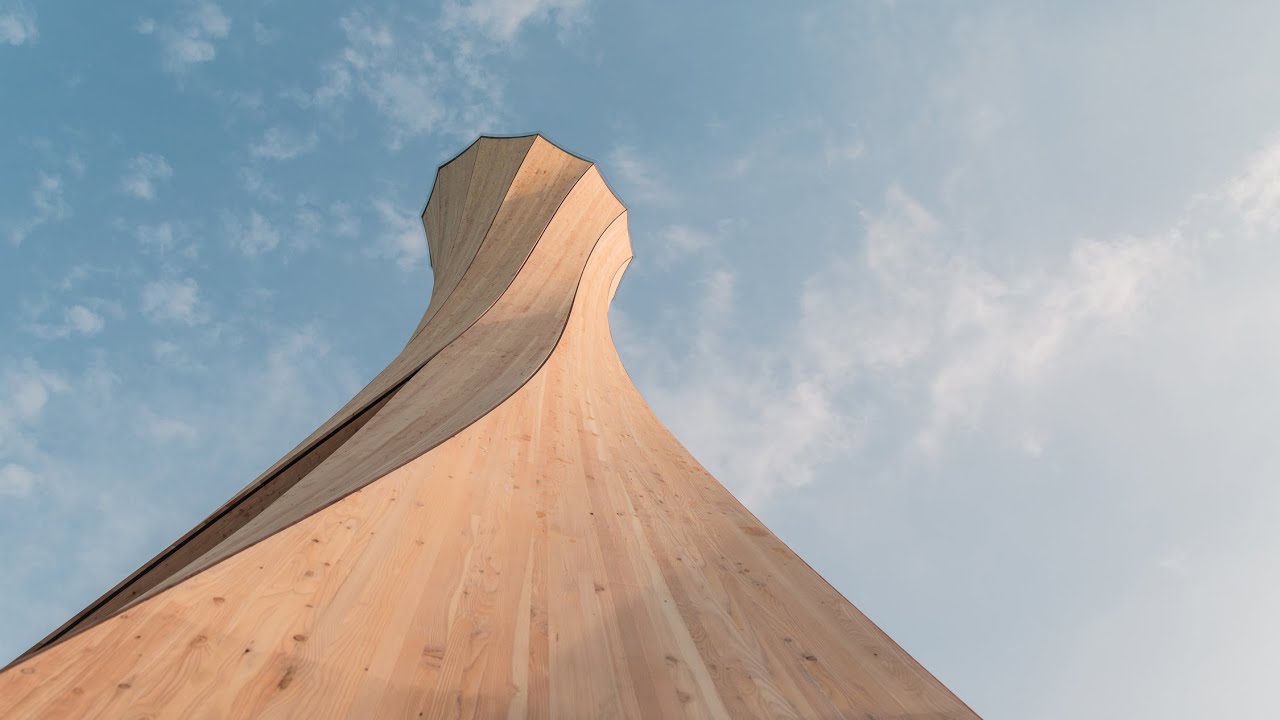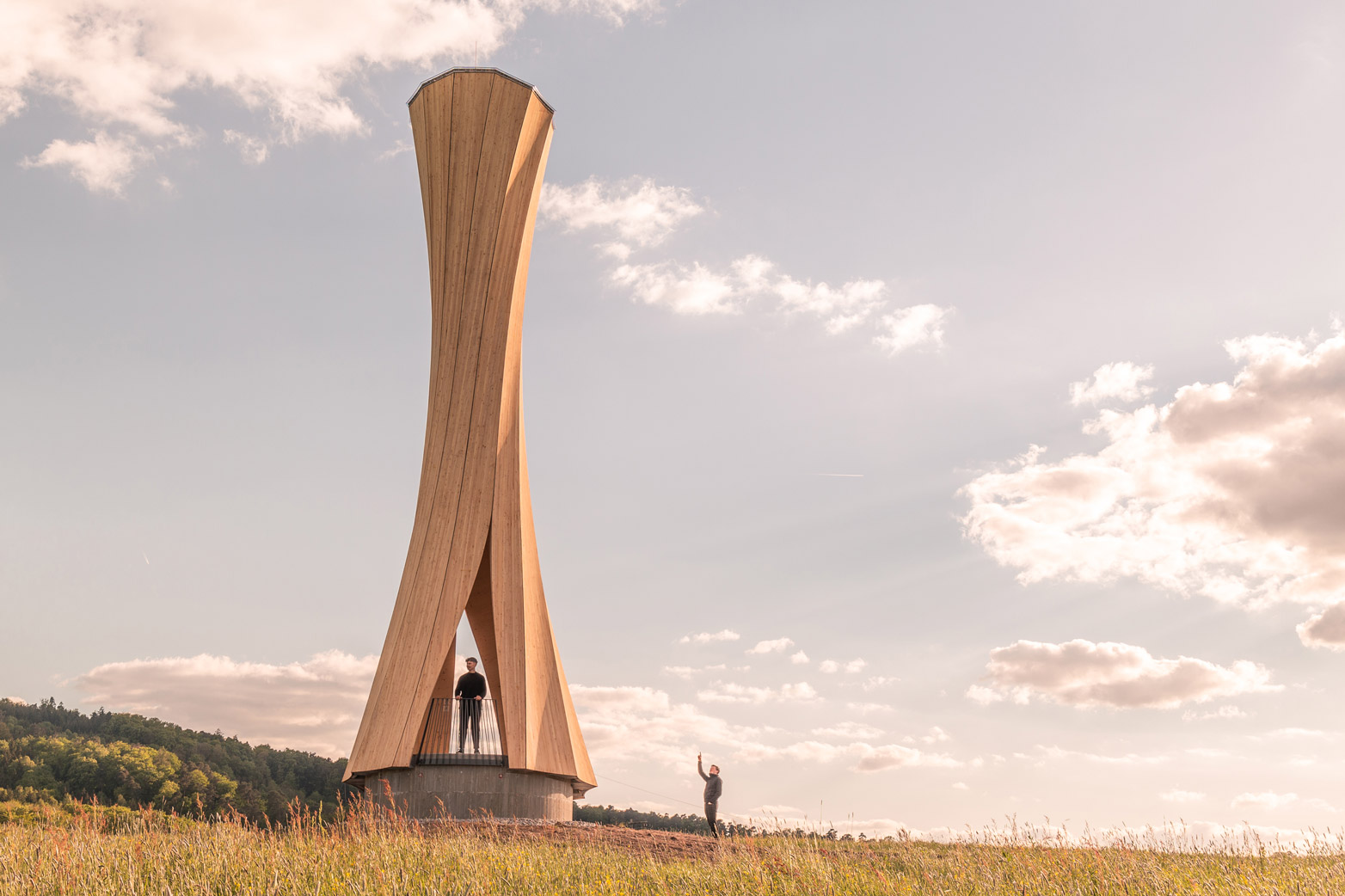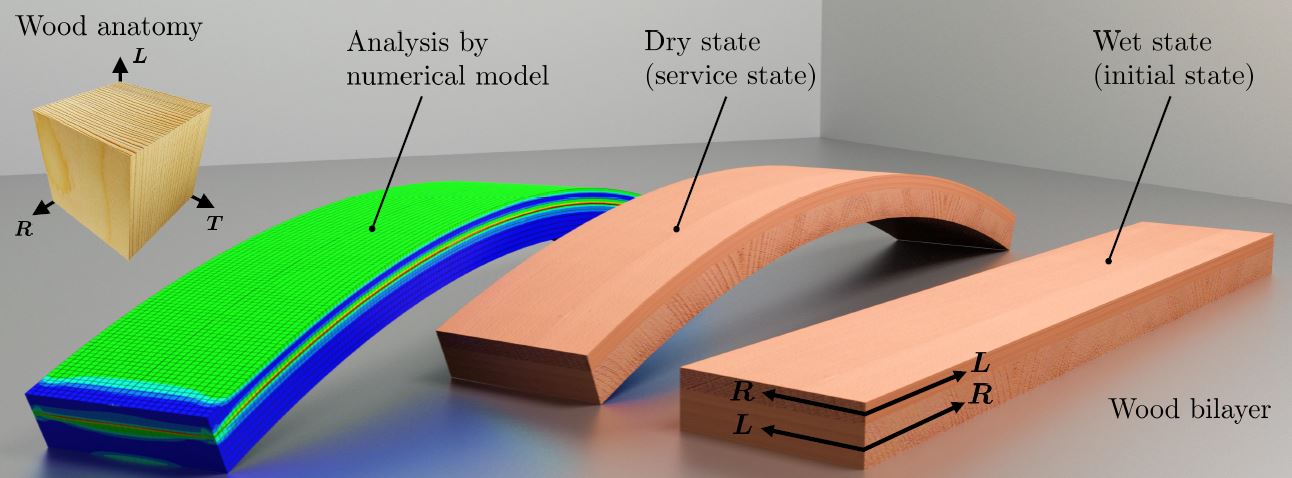Building with wood that bends itself into shape
Researchers from ETH Zurich, Empa and the University of Stuttgart have developed a new technique involving a controlled drying process that makes wooden panels bend into a pre-set shape without the use of any mechanical force.

Wood is a renewable resource and a popular, sustainable construction material. Complex architectural designs featuring curved or twisted structures, however, pose increasing challenges for the wood construction sector. Reshaping wood currently utilises large machines that consume substantial amounts of energy to press the building elements into the required shapes.
In a study recently published in external page Science Advances, researchers from ETH Zurich and Empa presented a process that has the potential to replace these inefficient mechanical reshaping processes. In collaboration with colleagues from the University of Stuttgart, they have developed an approach that makes solid wooden construction elements bend themselves into a pre-set shape without the use of external mechanical force.
Programmed curvature
The self-shaping process is based on the natural swelling and shrinking of wood caused by the moisture content of the material. When damp wood dries, it contracts more strongly perpendicular to the grain than along the grain. This warpage is normally an undesirable effect, but the researchers have taken advantage of the property by gluing two layers of wood together so that their grain directions are opposed to each other. This bilayer panel constitutes the foundation of the new method.
“As the water content of the bilayer panel decreases, one layer shrinks more than the other. Both layers are firmly glued together, so the wood bends,” explains Markus Rüggeberg, who is affiliated with both Empa and ETH and led the study. Depending on the thickness of the layers, grain direction and moisture content of the wood, the researchers can use a computer model to calculate the precise warpage of the building component during drying. They have dubbed this process “wood programming”.
Once a bilayer panel has reached its target shape, it can be glued together with similarly curved panels in a process called lamination. This allows the research team to obtain the required material thicknesses for use as cross-laminated timber, which always consists of multiple layers. A wooden component produced in this manner remains dimensionally stable even in fluctuating humidity.
“Our approach enables a wide range of shapes and curvature radii. The concept of programming wood opens up new architectural possibilities for this regionally available, renewable construction material,” says Philippe Grönquist, the lead author of the study who works at both institutions and has dedicated his doctoral thesis to this topic. The researchers have submitted a patent application for their method.

Curved to the skies: the Urbach Tower
The Urbach Tower proves that the method is suitable for large-scale wooden constructions. It is the world’s first wooden building made from large, self-shaping elements. Standing 14 metres tall, the striking tower was built as a landmark for the national horticultural show in Remstal near Stuttgart in May 2019. It is a joint project run by architects and engineers from the University of Stuttgart and the Swiss timber construction company Blumer-Lehmann.

Reference
Grönquist P et al. Analysis of hygroscopic self-shaping wood at large scale for curved mass timber structures. Science Advances (2019), doi: external page 10.1126/sciadv.aax1311

Comments
No comments yet